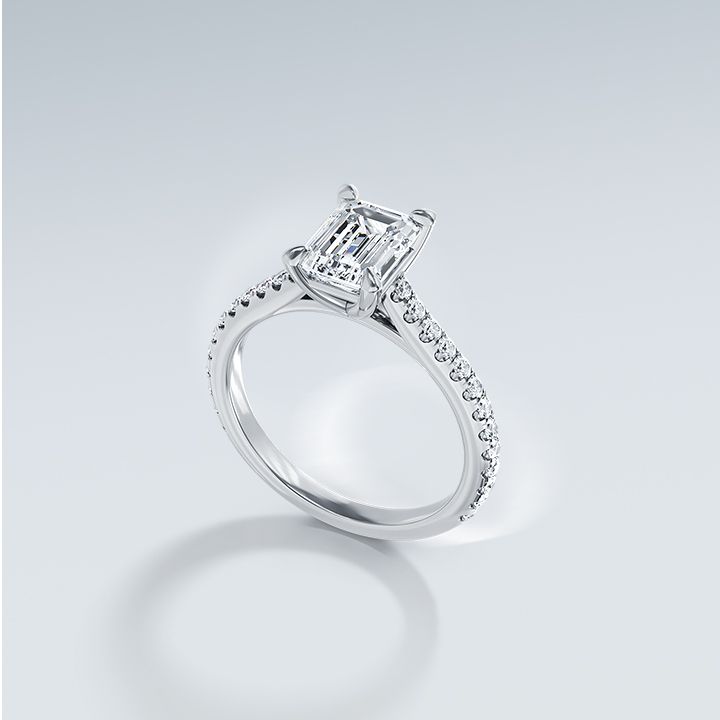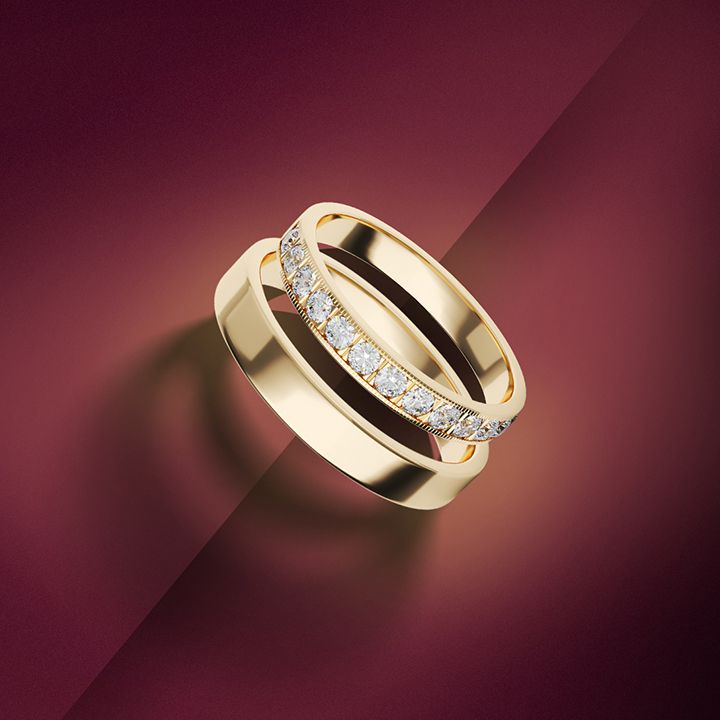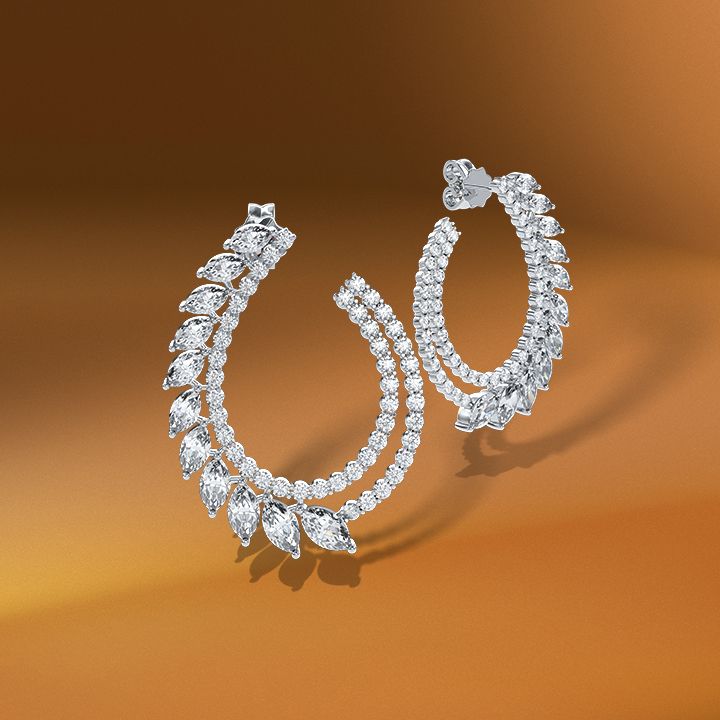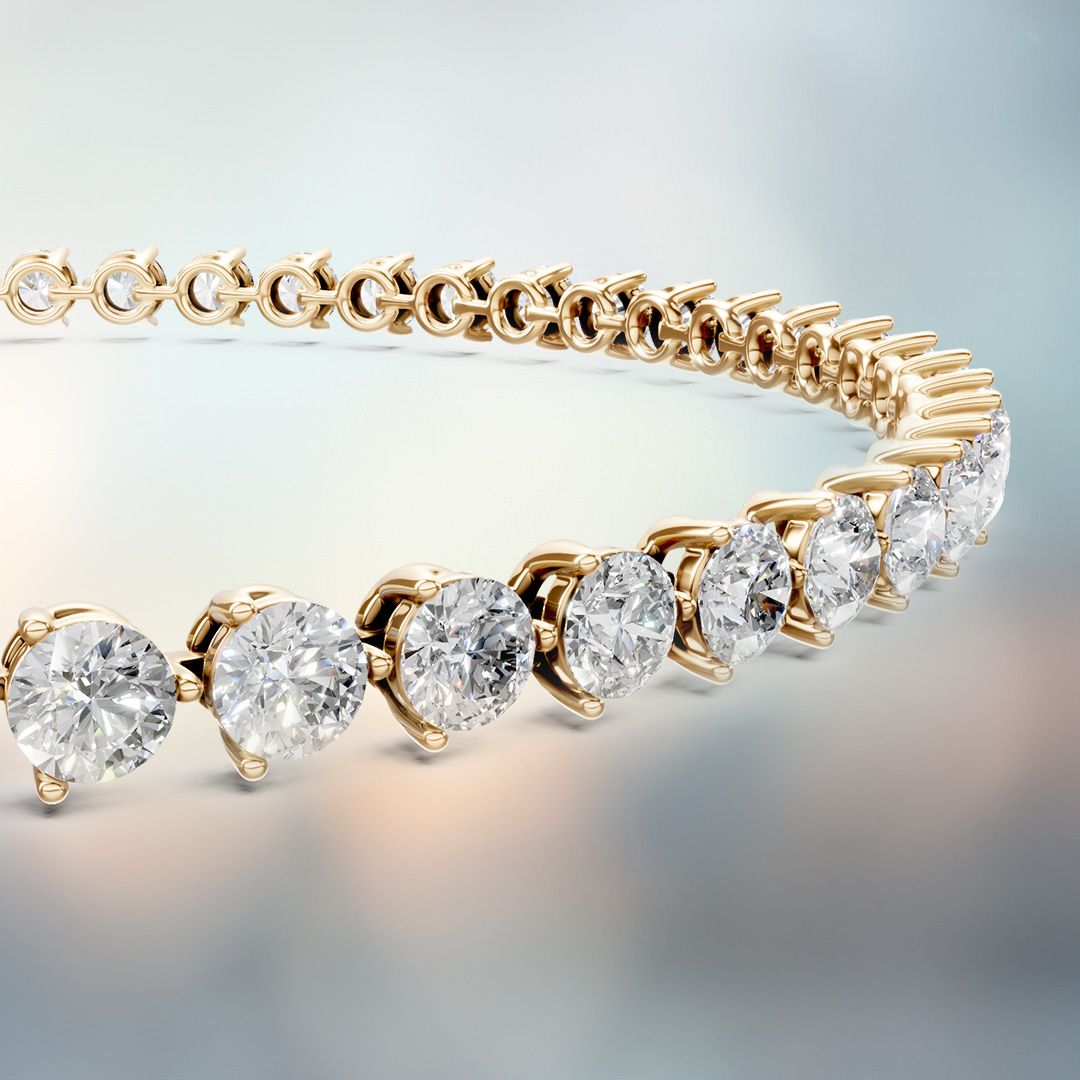
A PLATINUM
LOVE STORY
Presenting 5 new stellar pieces:
platinum engagement rings with different cuts of diamonds,
that come with diamonds graded by De Beers Institute of Diamonds.
Exceptionally durable.
A staple in the fine jewellery industry.
An infinite love story. And we call it PLATINUM.
#1
THE METAPHOR OF A LIFETIME COMMITMENT
Nothing holds a diamond more securely than platinum. As uniqueness is everything in bridal, this princess cut platinum ring will always attract the eye and provoke positive reactions. Talking about sealing the love with grace.
#2
MOST PRECIOUS
In the past, it was considered that Platinum is the only metal fit for a king. The cushion cut is one of the oldest diamond shapes, a cross between the round brilliant cut and the princess cut. This type of platinum ring will always appeal to diamond lovers, being a different, beautiful and unusual thing.
#3
UNMATCHED BEAUTY
Today, platinum is synonymous with luxury and quality. Thanks to its breathtaking sparkle, this oval-shaped platinum ring looks flattering on almost all finger shapes. This could be the perfect engagement ring for your love story.
SHAPES OF DEVOTION
THE 4C
2COLOUR
2
COLOUR
A diamond’s colour is valued by its absence – like a drop of pure water, a perfectly structured diamond is completely clear. But because colourless diamonds naturally develop in slightly different shades, we use a grading scale from D to Z to show whether a diamond is truly colourless (D) or off-white (Z).
The differences between one colour grade and the next are very subtle, so grading is done under controlled lighting and in precise conditions, using a master diamond sample set for comparison and accuracy.
Natural diamonds also occur in shades of blue, green, yellow-orange, pink, red and even black. Known as ‘fancy colour diamonds’, these are extremely rare and valuable. They’re graded according to their strength of colour, with more colour holding greater value.
A diamond’s cut grade is evaluated within a range:
COLOURLESS
NEAR COLOURLESS
SLIGHTLY TINTED
VERY LIGHT YELLOW
EXCELLENT
3CLARITY
3
CLARITY
Every diamond has followed an epic journey over billions of years, a result of searing temperatures and extreme pressures deep in the Earth, and brought to the surface through volcanic eruptions. This natural process has resulted in almost all diamonds developing small natural features, called inclusions, along their journey.
There are many types of inclusions, such as trapped minerals like amethyst, tiny fractures caused by temperature changes or tiny clouds made of thousands of microscopic diamond crystals. A gemmologist will examine any inclusions at 10x magnification to determine their individual characteristics of size, position, number, contrast and nature, before assigning an overall clarity grade to the diamond. Though usually invisible to the naked eye, inclusions influence the value of a diamond through the clarity grade. The closer a diamond is to being pure, the more rare it is and the higher the grade, therefore the greater the value.
Diamond clarity is graded within a range from Flawless to Included:
FL
IF
VVS1
VVS2
VS1
VS2
SI1
SI2
I1
I3
4CARAT
4
CARAT
In the ancient world, carob seeds were used as a reference for the weight of a diamond. Our methods for weighing diamonds have become much more precise since then – today we measure a diamond’s weight in carats. One carat is equal to .2 grams, and is then divided into 100 points. This means that a half-carat, or .50 carat diamond is also known as a 50 points diamond.
Carat is often mistaken for being a measure of size, but it’s actually a measure of weight. Because diamonds become more and more rare the greater the carat weight, a heavier diamond is more valuable than the equivalent combined weight of several lighter diamonds – a one carat diamond will generally cost more than two half-carat diamonds.
Trust at utmost certainty
Established in 1888, De Beers is the world’s leading diamond company, guiding individuals on their personal journey of discovery. Harnessing nature's finest work of art, TEILOR selects the rarest natural diamonds, creating distinctive designs, each as unique as its wearer.
OUR GRADING VALUES
De Beers Institute of Diamonds believes buyers should feel confident when purchasing a diamond and therefore the company strive to offer a level of professionalism and integrity unrivalled in the industry.
Utilising over 130 years of experience, De Beers Institute of Diamonds exclusively grade natural and untreated diamonds. Their grading combines 21st century technology and techniques with the leading industry standards. This combination of innovative grading systems and transparent published standards, ensures unparalleled accuracy and global consistency in diamonds grading.
Utilising over 130 years of experience, De Beers Institute of Diamonds exclusively grade natural and untreated diamonds. Their grading combines 21st century technology and techniques with the leading industry standards. This combination of innovative grading systems and transparent published standards, ensures unparalleled accuracy and global consistency in diamonds grading.
VALORILE NOASTRE DE NOTARE
INTEGRITY
INTEGRITY
De Beers Institute of Diamonds ensures the integrity of all their processes by using a 'black box' system where diamonds are distributed in anonymous boxes so that each diamond is appraised fairly according only to its features.
CONSISTENCY
CONSISTENCY
De Beers Institute of Diamonds employs some of the world's most experienced graders, who undergo rigorous training, so that they have the knowledge and expertise to evaluate every diamond accurately and consistently, wherever it was mined.
PERPETUAL LOVE
Discover a whole collection graded by De Beers Institute of Diamonds.
Browse for exclusive engagement rings, stunning pieces of white, pink and yellow gold, set with different shapes of diamonds.






